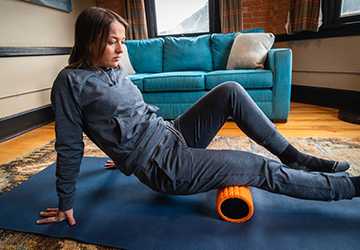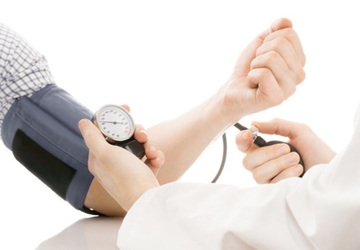health
Have you ever pushed yourself during an intense workout, only to be left with sore, stiff, tired muscles after? This muscle damage and resulting achiness is typical, especially if your workout is more challenging.
The good news is that you can proactively facilitate repair, alleviate discomfort, and set your muscles up for future growth.
This blog post will explore four research-backed recovery methods to help your muscles bounce back faster and more robustly.
Are you ready to repair and grow after intense exercise?

4 Ways to Muscle Repair After Intense Exercise
Scheduling active recovery days allows you to find the optimal balance between intense training and adequate rest. Just as you focus on pushing your body during challenging workouts, be just as intentional about incorporating downtime for repair and growth.
So start planning out those walks, easy spins and leisure swims.
1.Replenish Your Nutrient Stores
Engaging in intense exercise substantially depletes the glycogen energy stored in your muscles. It also causes minor tears and damage to muscle fibres.
During this two-hour window, you must also ingest 0.25-0.4 grams of protein per pound of body weight to provide amino acids that stimulate muscle-building. Great lean protein sources include poultry, fish, dairy, eggs and plant proteins.
Try drinking a nutrition-packed smoothie or eating a balanced meal as soon as possible after an intense training session.
Refuelling with complex carbs and proteins post-workout helps your muscles recover efficiently.
Be intentional by planning to consume a balanced meal or nutrition-focused smoothie within 2-hour hours after intense training sessions.
2.Prioritize Quality Rest & Active Recovery
After intense training bouts that cause muscle fibre damage, the body requires adequate rest to repair injured tissue fully. During sleep and downtime, your muscles recover and regenerate to return fitter and more fatigue-resistant.
Aim for 7 to 9 hours of quality sleep per night to facilitate tissue growth. Nap if your schedule allows. Taking 1-2 days off from exercise before completing another intense, muscle-fatiguing session is also wise.
Low-intensity active recovery days help speed up the healing process between strength sessions.
Be diligent about getting enough sleep and incorporating 1 to 2 rest days between intense workouts focused on the same muscle groups. This allows proper tissue repair so you can continue progressing.
3.Utilize Massage Techniques
Employing massage tools like foam rollers, massage balls, and handheld percussion massagers can provide effective muscle treatment after challenging workouts.
These devices help alleviate soreness and stiffness by increasing circulation to tired muscles. Greater blood flow brings fresh nutrients to distressed areas while removing lactic acid buildup and other waste byproducts related to exercise stress.
Target tight hamstrings, calves, shoulders and back with slow rolling and compression massage post-training session. After intense training bouts, spending just 5-10 minutes to pinpoint problem muscle groups can accelerate the overall muscle repair and growth process.
Invest in quality massage tools and learn easy self-massage techniques targeting overworked muscle areas. Consistently incorporating massage after demanding training supports lasting mobility.
4.Try Alternating Cold & Heat
Fluctuating between cold and heat therapy is another proven tactic that promotes muscle recovery after intense exercise. The contrast of the two extremes stimulates circulation while reducing soreness and inflammation related to workout-induced muscle damage.
Try taking an ice bath or a cold pack for 10-20 minutes, constricting blood vessels and limiting swelling and inflammation.
Follow up a cold therapy session with a warm Epsom salt bath or heating pad for 10-20 minutes to open up blood vessels, boost fresh blood flow, and transport nutrients to damaged sites while assisting in removing metabolic waste.

Pre and Post-Workout Nutrition Tips
What you consume before and after intense training sessions dramatically impacts your ability to recover properly.
Follow these essential nutrition guidelines:
● Pre Workout
Eat a light, high-carb/moderate protein meal about 60-90 minutes before starting exercise. Good options include oats with Greek yoghurt, fruit, and whole-grain toast with eggs. Stay hydrated, too, by sipping water.
● Post Workout
Replenish depleted glycogen and repair broken down muscle proteins immediately after your session within 2 hours by consuming quick digesting carbs coupled with fast absorbing proteins. Try a nutrition-packed smoothie or balanced meal.
Conclusion
Implementing a comprehensive recovery protocol focused on replenishing nutrients, prioritizing rest, utilizing massage techniques, and harnessing the power of cold and heat therapy allows you to recharge effectively after intense training sessions.
Dedicate time for your stiff working muscles to repair fully so they bounce back more robustly, allowing you to continually challenge your body and reach new fitness levels.
FAQs
Q. What are the best post-workout foods?
Ans. Some of the best foods to eat after an intense workout include carbohydrates like sweet potatoes, fruits, whole grains and dairy for muscle glycogen restoration and protein sources such as eggs, chicken, fish or plant-based proteins to repair damaged muscle tissue.
Q. How long should you wait between strength training workouts?
Ans. Taking at least 1-2 full rest days between intense strength workouts focusing on the same muscle groups is recommended to allow the body adequate recovery time for muscles to repair and grow fully. You can do gentle, active recovery workouts like walking or cycling on rest days.
Q. What helps muscle soreness and stiffness?
Ans. Massage tools like foam rollers and massage balls can help alleviate post-workout muscle soreness and stiffness. Alternately, Cold and heat therapy can also decrease pain and loosen tight muscles. Light active recovery workouts can pump blood flow to promote healing, too.

